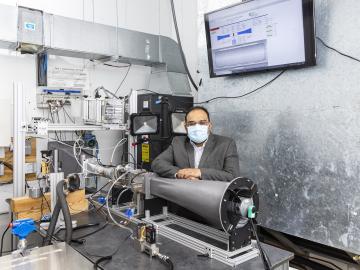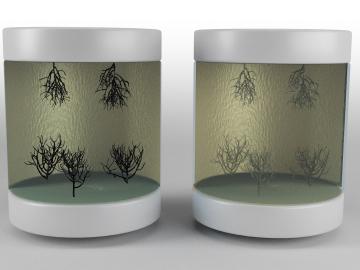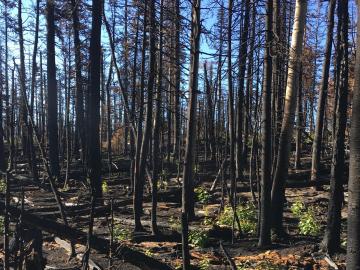
Filter News
Area of Research
- (-) Energy Science (31)
- (-) Materials (9)
- Advanced Manufacturing (1)
- Biology and Environment (32)
- Computational Biology (1)
- Computational Engineering (2)
- Fusion and Fission (4)
- Isotopes (11)
- Materials for Computing (10)
- Mathematics (1)
- National Security (1)
- Neutron Science (17)
- Supercomputing (10)
- Transportation Systems (1)
News Topics
- (-) Bioenergy (3)
- (-) Environment (12)
- (-) Isotopes (1)
- (-) Nanotechnology (7)
- (-) Neutron Science (5)
- (-) Transportation (16)
- 3-D Printing/Advanced Manufacturing (24)
- Advanced Reactors (1)
- Artificial Intelligence (2)
- Big Data (3)
- Biology (5)
- Biotechnology (1)
- Buildings (11)
- Chemical Sciences (2)
- Clean Water (1)
- Composites (5)
- Computer Science (6)
- Coronavirus (2)
- Critical Materials (4)
- Cybersecurity (1)
- Energy Storage (20)
- Frontier (1)
- Fusion (1)
- Grid (7)
- High-Performance Computing (4)
- ITER (1)
- Materials (22)
- Materials Science (11)
- Mathematics (1)
- Microscopy (5)
- Nuclear Energy (1)
- Physics (1)
- Polymers (3)
- Quantum Computing (1)
- Quantum Science (2)
- Security (1)
- Space Exploration (2)
- Statistics (1)
- Summit (1)
Media Contacts

A research team led by Oak Ridge National Laboratory bioengineered a microbe to efficiently turn waste into itaconic acid, an industrial chemical used in plastics and paints.

At the Department of Energy’s Oak Ridge National Laboratory, scientists use artificial intelligence, or AI, to accelerate the discovery and development of materials for energy and information technologies.

Through a consortium of Department of Energy national laboratories, ORNL scientists are applying their expertise to provide solutions that enable the commercialization of emission-free hydrogen fuel cell technology for heavy-duty

A newly released dataset that tracks the movement of everything from food to gasoline across the United States by air, water, truck, rail and pipeline showed the value and tonnage of those goods rose significantly between 2012 and 2017.

Oak Ridge National Laboratory was among an international team, led by Lawrence Livermore National Laboratory, who synthesized 108 elevated carbon dioxide, or CO2, experiments performed in various ecosystems to find out how much carbon is

When Kashif Nawaz looks at a satellite map of the U.S., he sees millions of buildings that could hold a potential solution for the capture of carbon dioxide, a plentiful gas that can be harmful when excessive amounts are released into the atmosphere, raising the Earth’s temperature.

Researchers at Oak Ridge National Laboratory have identified a statistical relationship between the growth of cities and the spread of paved surfaces like roads and sidewalks. These impervious surfaces impede the flow of water into the ground, affecting the water cycle and, by extension, the climate.

Scientists at Oak Ridge National Laboratory successfully demonstrated a technique to heal dendrites that formed in a solid electrolyte, resolving an issue that can hamper the performance of high energy-density, solid-state batteries.

Xin Sun has been selected as the associate laboratory director for the Energy Science and Technology Directorate, or ESTD, at the Department of Energy’s Oak Ridge National Laboratory.

An Oak Ridge National Laboratory research team discovered that aspen saplings emerging after wildfire have less diverse microbiomes and more pathogens in their leaves, providing new insights about how fire affects ecosystem recovery.


